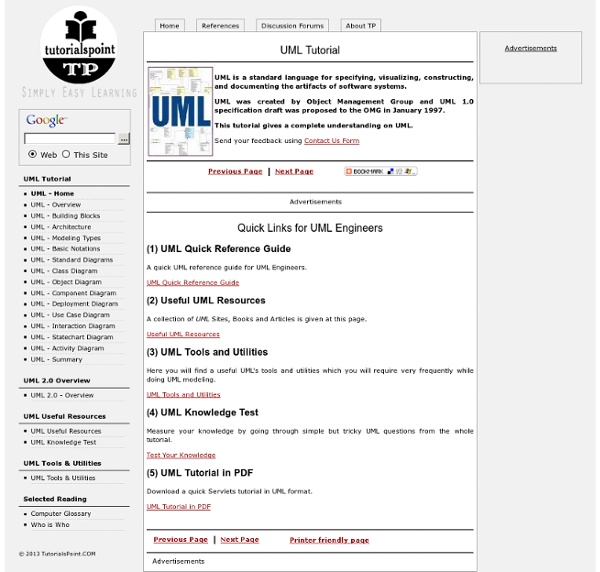



Struts 1 Tutorial In this tutorials, you will learn how to create a simple customer management (add and select) web application, Maven as project management tool, Struts 1.x as web framework, Spring as dependency injection framework and Hibernate as database ORM framework. The overall integration architecture is look like following : Struts (Web page) <---> Spring DI <--> Hibernate (DAO) <---> Database To integrate all those technologies together, you should.. Integrate Spring with Hibernate with Spring’s “LocalSessionFactoryBean” class.Integrate Spring with Struts via Spring’s ready make Struts plug-in – “ContextLoaderPlugIn“. 1. This is this final project structure. 2. Create a customer table to store the customer details. DROP TABLE IF EXISTS `developer.am`. 3. Define all the Struts, Spring and Hibernate dependency libraries in pom.xml.pom.xml 4. Nothing much need to configure in Hibernate, just declare a customer XML mapping file and model.Customer.hbm.xml Customer.java 5. CustomerBo.java CustomerBoImpl.java 6.
UML Tutorial - UML Unified Modelling Language - Sparx Systems The Unified Modeling Language (UML) has quickly become the de-facto standard for building Object-Oriented software. This tutorial provides a technical overview of the 13 UML diagrams supported by Enterprise Architect. UML 2 semantics are explained in detail in the new UML 2.0 tutorial. Firstly... The OMG specification states: "The Unified Modeling Language (UML) is a graphical language for visualizing, specifying, constructing, and documenting the artifacts of a software-intensive system. The important point to note here is that UML is a 'language' for specifying and not a method or procedure. UML defines the notation and semantics for the following domains: The UML also defines extension mechanisms for extending the UML to meet specialized needs (for example Business Process Modeling extensions). Part 2 of this tutorial expands on how you use the UML to define and build actual systems. See also Business Process Modeling (pdf).
Unified Modeling Language Die Unified Modeling Language (Vereinheitlichte Modellierungssprache), kurz UML, ist eine grafische Modellierungssprache zur Spezifikation, Konstruktion und Dokumentation von Software-Teilen und anderen Systemen.[1] Sie wird von der Object Management Group (OMG) entwickelt und ist sowohl von ihr als auch von der ISO (ISO/IEC 19505 für Version 2.1.2[2]) standardisiert. Im Sinne einer Sprache definiert UML dabei Bezeichner für die meisten bei einer Modellierung wichtigen Begriffe und legt mögliche Beziehungen zwischen diesen Begriffen fest. UML definiert weiter graphische Notationen für diese Begriffe und für Modelle statischer Strukturen und dynamischer Abläufe, die man mit diesen Begriffen formulieren kann. UML ist heute die dominierende Sprache für die Softwaresystem-Modellierung. Projektauftraggeber und Fachvertreter prüfen und bestätigen zum Beispiel Anforderungen an ein System, die Wirtschaftsanalytiker bzw. Entstehungsgeschichte[Bearbeiten] Am 21. Strukturierung[Bearbeiten]
Struts + Spring integration example Here’s a tutorial to show how to access beans declared in the Spring Ioc container in a web application developed with Apache Struts 1.x. Spring comes with “Struts-specific” solution for access beans declared in the Spring Ioc container. Register a Spring’s ready-make Struts plug-in in the Struts configuration file.Change your Struts action class to extend the Spring’s ActionSupport class, a subclass of the Struts Action class.The ActionSupport provide a convenient getWebApplicationContext() method for you to access beans declared in Spring Ioc container. 1. To integrate with Struts 1.x, Spring is required the “spring-web.jar” and “spring-struts.jar” libraries. <! 2. In your Struts configuration file (struts-config.xml), register the Spring’s ready-make Struts plug-in – “ ContextLoaderPlugIn“. struts-config.xml The “ContextLoaderPlugIn” will handle all the integration work between Struts and Spring. SpringBeans.xml 3. CustomerBean.xml Struts Action Done.
Practical UML: A Hands-On Introduction for Developers The heart of object-oriented problem solving is the construction of a model. The model abstracts the essential details of the underlying problem from its usually complicated real world. Several modeling tools are wrapped under the heading of the UML™, which stands for Unified Modeling Language™. At the center of the UML are its nine kinds of modeling diagrams, which we describe here. Some of the sections of this course contain links to pages with more detailed information. Why is UML important? Let's look at this question from the point of view of the construction trade. Writing software is not unlike constructing a building. The UML is applicable to object-oriented problem solving. Models consist of objects that interact by sending each other messages. Classes are the "blueprints" for objects. Use case diagrams Use case diagrams describe what a system does from the standpoint of an external observer. Use case diagrams are closely connected to scenarios. Actors are stick figures.
UML 2.5 Diagrams Overview A UML diagram is a partial graphical representation (view) of a model of a system under design, implementation, or already in existence. UML diagram contains graphical elements (symbols) - UML nodes connected with edges (also known as paths or flows) - that represent elements in the UML model of the designed system. The UML model of the system might also contain other documentation such as use cases written as templated texts. The kind of the diagram is defined by the primary graphical symbols shown on the diagram. For example, a diagram where the primary symbols in the contents area are classes is class diagram. UML specification does not preclude mixing of different kinds of diagrams, e.g. to combine structural and behavioral elements to show a state machine nested inside a use case. UML specification defines two major kinds of UML diagram: structure diagrams and behavior diagrams. UML 2.5 diagrams could be categorized hierarchically as shown below. UML 2.5 Diagrams Overview.
UML graphical notation overview, UML diagram examples, tutorials and reference.